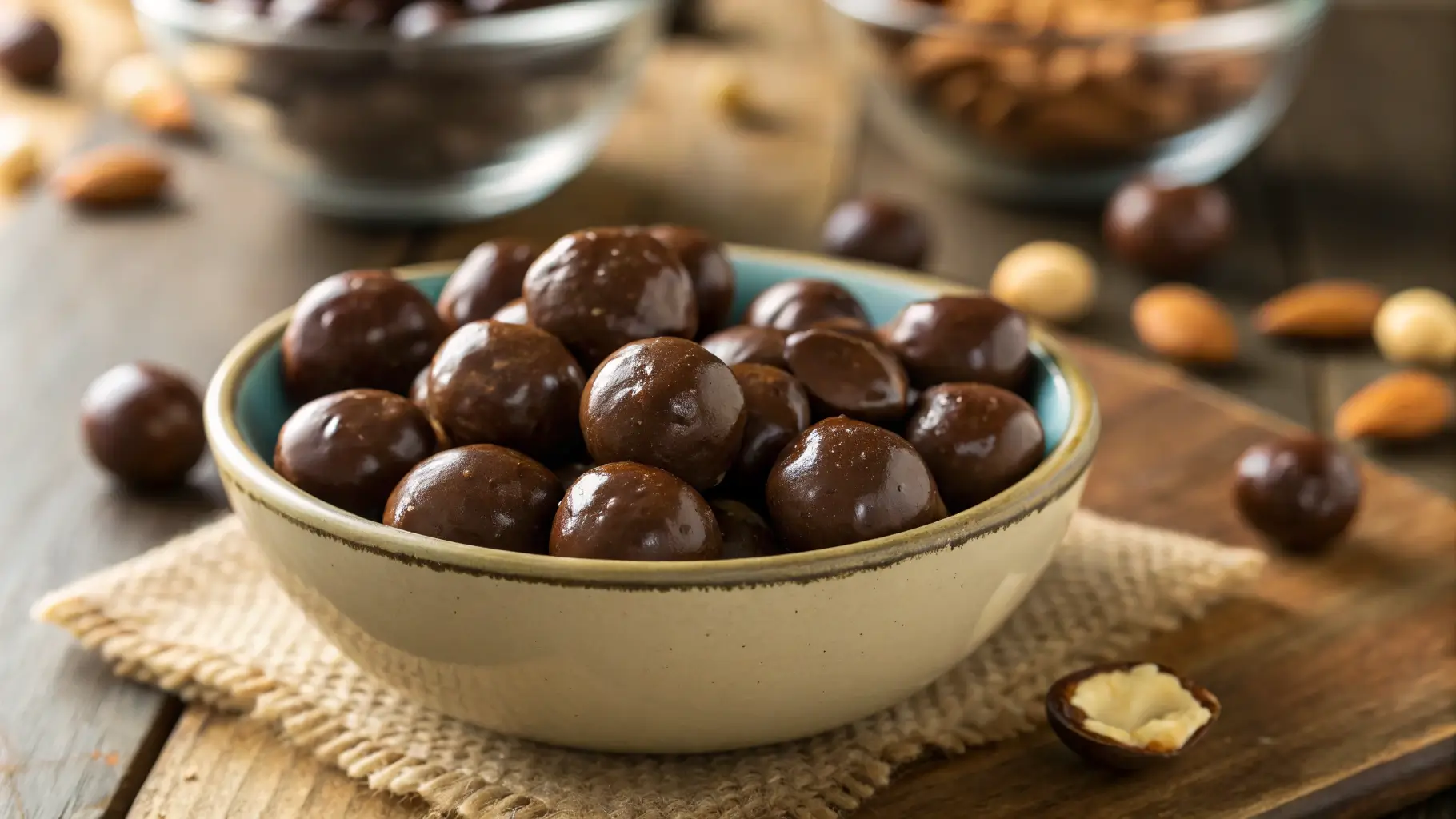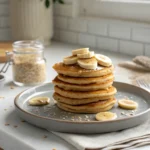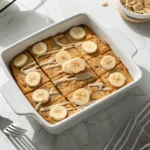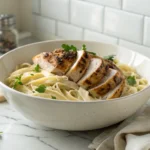If there’s one snack that has never let me down, it’s chocolate covered peanuts. Whether I’m in the middle of a tough training cycle or just need something sweet without wrecking my macros, this snack always does the trick. It’s the perfect combination of crunch, rich chocolate, and just the right amount of protein to keep me going.
I used to grab store-bought versions, but most were loaded with unnecessary sugar and artificial ingredients. So, I decided to make my own. It turned out to be way easier than I expected, and the best part? I could tweak it based on my fitness goals, more protein when I’m bulking, lower carbs when I’m cutting.
Now, I always keep a batch ready to go. It’s a great pre-workout boost, a satisfying post-workout bite, and an all-around clean snack when cravings hit. If you love peanuts and chocolate but want a healthier, gym-friendly option, you’re in the right place.
Table of Contents
Ingredients for Healthy Chocolate Covered Peanuts
Choosing the Right Ingredients for Macros
Making chocolate covered peanuts at home means you get full control over what goes in. No extra sugar, no processed oils, just clean, whole ingredients that fit your macros.
Here’s what you’ll need:
- 1 cup peanuts (raw, roasted, or unsalted)
- 4 oz dark chocolate (70% cocoa or higher) – the darker, the better for less sugar and more antioxidants
- 1 teaspoon coconut oil – helps make the melted chocolate smoother
- ¼ teaspoon sea salt (optional) – enhances the flavor without extra calories
- 1 teaspoon cinnamon or vanilla extract (optional) – for a subtle, warm sweetness
If you’re bulking, consider adding crushed almonds or a drizzle of natural peanut butter for more healthy fats. If you’re cutting, use a thinner chocolate layer to keep calories in check.
Ingredient Swaps for Different Diets
- Low-carb/keto: Use sugar-free dark chocolate and avoid any sweeteners
- Higher protein: Mix in 1 scoop of chocolate protein powder into the melted chocolate before coating the peanuts
- Dairy-free: Choose dairy-free dark chocolate
Now that you’ve got the best ingredients, let’s move on to how to make them!
Step-by-Step Recipe for Chocolate Covered Peanuts
Step 1: Preparing the Peanuts
If you’re using raw peanuts, roasting them first brings out a deeper flavor.
- Preheat oven to 350°F (175°C).
- Spread peanuts in a single layer on a baking sheet.
- Roast for 8-10 minutes, shaking halfway through to prevent burning.
- Let them cool completely before coating.
If you’re using already roasted peanuts, you can skip this step!
Step 2: Melting the Chocolate Properly
Chocolate can be tricky to melt, but a little patience goes a long way.
- Microwave method: Break the chocolate into small pieces and place in a microwave-safe bowl. Add coconut oil and heat in 30-second intervals, stirring in between, until fully melted.
- Double boiler method: Place a heatproof bowl over a pot of simmering water. Stir the chocolate and coconut oil until smooth.
Step 3: Coating the Peanuts Evenly
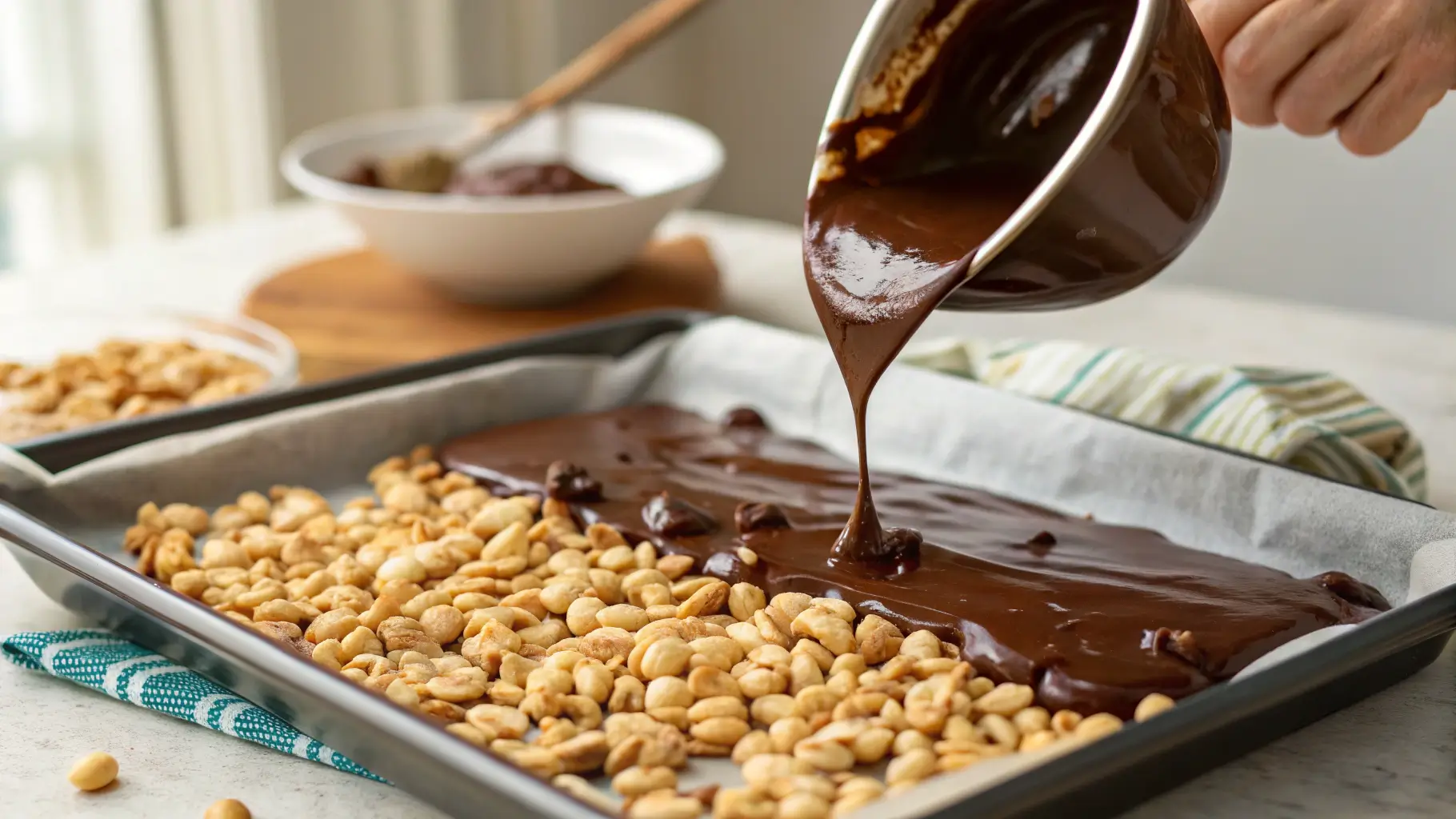
- Add the cooled peanuts to the melted chocolate.
- Stir until all the peanuts are fully coated.
- Using a fork or slotted spoon, scoop out small clusters or individual peanuts and place them on a parchment-lined baking sheet.
Step 4: Setting and Storing the Coated Peanuts
- Sprinkle with sea salt or cinnamon while still wet for extra flavor.
- Let them set at room temperature for 30 minutes or speed it up by placing them in the fridge for 10-15 minutes.
Once set, they’re ready to enjoy! Store in an airtight container for up to two weeks.
For more fitness-friendly treats, check out this high-protein dessert guide on Muscles Chef.
Nutritional Breakdown of Chocolate Covered Peanuts
Calories and Macronutrients Per Serving
One of the best things about chocolate covered peanuts is how easy they are to fit into different diet plans. Whether you need a quick energy boost or a post-workout snack, they deliver a good balance of protein, healthy fats, and fiber.
Here’s a rough estimate of the nutrition per 1-ounce (28g) serving:
| Nutrient | Amount |
|---|---|
| Calories | 180-220 |
| Protein | 6g |
| Fats | 14g |
| Carbs | 10g |
| Fiber | 2g |
The exact macros will vary depending on the type of chocolate you use. Darker chocolate with 70% cocoa or more has less sugar and more antioxidants, making it a better option for fitness-focused eating.
How to Fit This Snack into Your Diet Plan
- For muscle gain (bulking): Pair with a protein shake for a balanced post-workout snack.
- For fat loss (cutting): Stick to a smaller portion and mix with high-protein foods like Greek yogurt to keep you full longer.
- For low-carb/keto diets: Use sugar-free dark chocolate and go for unsweetened roasted peanuts to keep net carbs low.
Eating smart doesn’t mean skipping out on delicious snacks. These chocolate covered peanuts are proof that you can enjoy something sweet while staying on track.
Meal Prep and Storage Tips
How to Store for Maximum Freshness
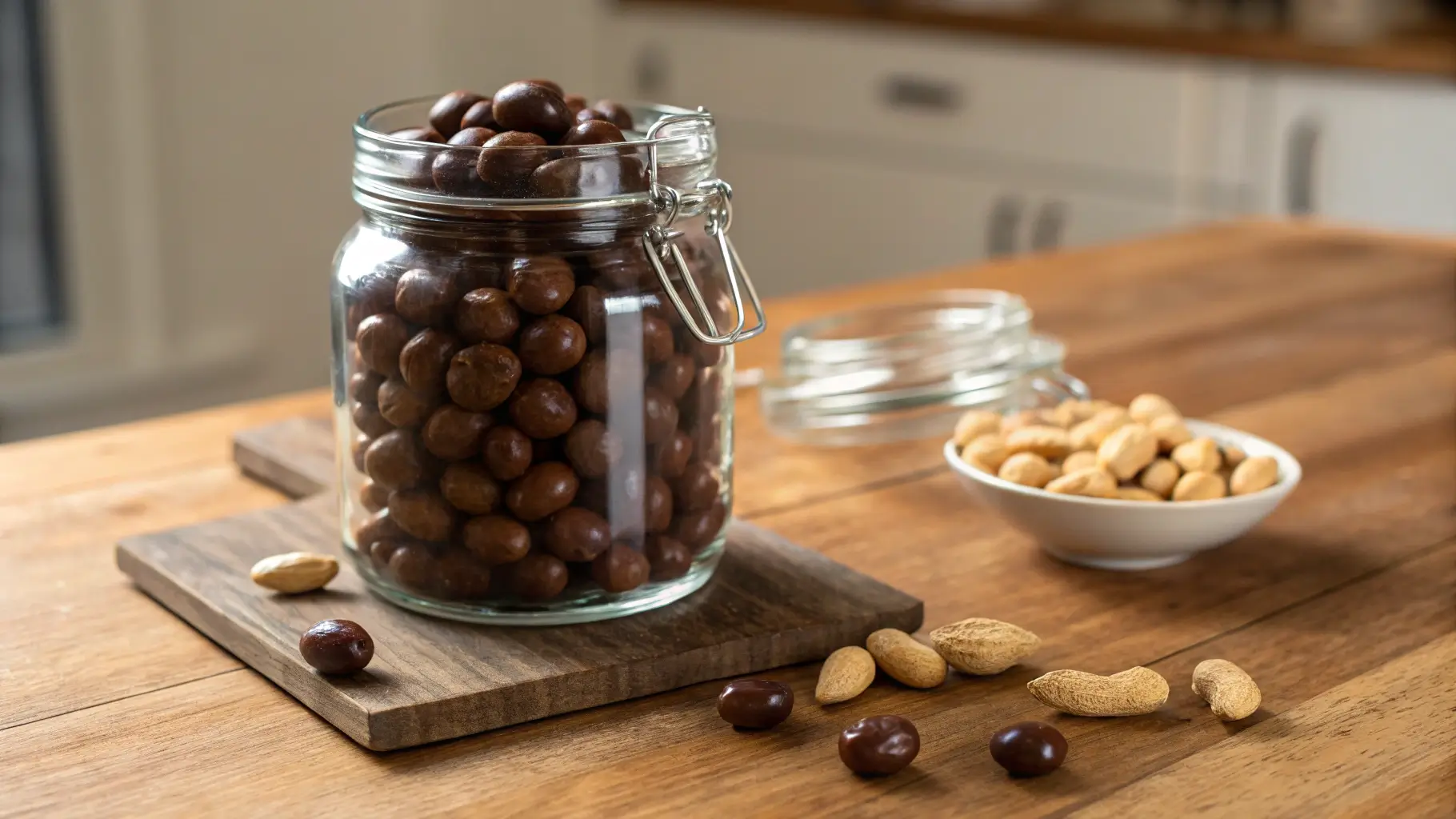
Homemade chocolate covered peanuts don’t have preservatives like store-bought ones, but they still last a good while when stored properly.
- Room temperature: Store in an airtight container in a cool, dry place for up to 2 weeks.
- Refrigerator: If you live in a warm climate or prefer a firmer texture, keep them in the fridge. They’ll stay fresh for up to 1 month.
- Freezer: Want to make a big batch? Freeze them in a sealed bag for up to 3 months. Just let them sit at room temperature for a few minutes before eating so they’re not too hard.
Can You Freeze Chocolate Covered Peanuts?
Yes! Freezing is a great option if you like meal prepping snacks ahead of time.
- Best way to freeze: Lay them out in a single layer on a baking sheet and freeze for about 30 minutes before transferring to a container. This prevents them from sticking together.
- How to thaw: Just leave them out at room temperature for 5-10 minutes before eating.
For another easy high-protein snack, check out this protein cinnamon roll recipe.
Topping and Pairing Ideas
Adding Extra Flavor Without Extra Calories
One of the best things about chocolate covered peanuts is how easily you can change up the flavors. A few simple toppings can take them to the next level without adding too many extra calories.
- Sea salt: Just a light sprinkle enhances the sweetness of the chocolate while balancing the flavors.
- Cocoa powder: Dusting them with unsweetened cocoa gives a deeper chocolate taste.
- Cinnamon: A pinch of cinnamon adds a warm, slightly sweet spice that pairs well with dark chocolate.
- Crushed nuts: Want even more crunch? Roll them in finely chopped almonds or pistachios before the chocolate hardens.
If you like variety, try making half the batch with one topping and half with another. That way, you have different flavors to enjoy throughout the week.
What to Eat Them With?
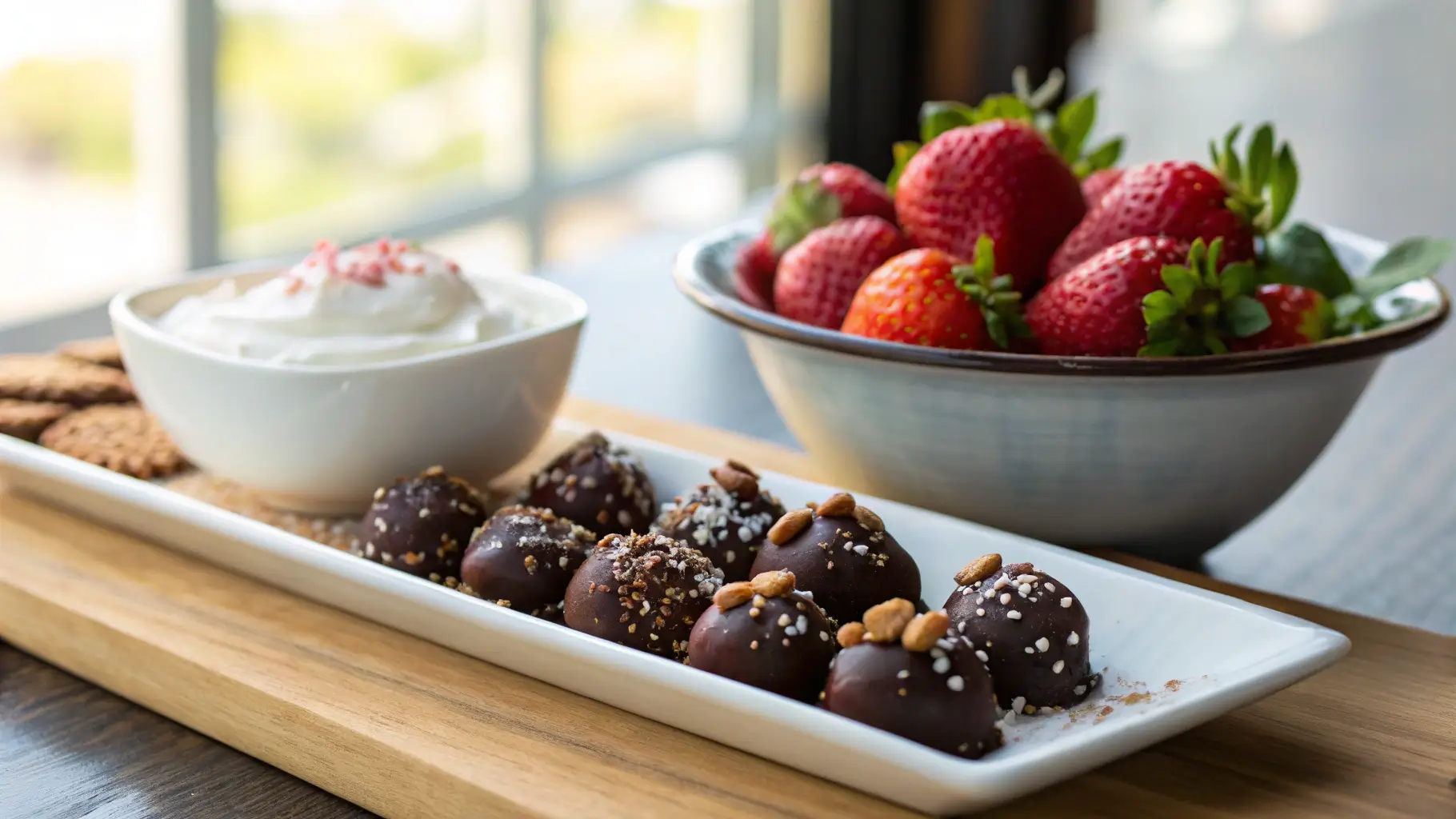
Chocolate covered peanuts are great on their own, but they also pair well with other foods for a more balanced snack.
- With Greek yogurt: Toss a few into a bowl of plain or vanilla Greek yogurt for a protein boost.
- In oatmeal: Stir them into warm oats for a crunchy, chocolatey addition.
- With fresh fruit: Bananas, strawberries, or apple slices all taste great alongside these peanuts.
- In trail mix: Mix with almonds, walnuts, coconut flakes, or dried berries for an easy grab-and-go snack.
For another tasty and protein-packed snack, check out this cottage cheese chocolate mousse recipe.
Variations for Different Fitness Goals
For Bulking: Higher Calorie Version
If you’re trying to gain muscle, you need more calories and healthy fats to support recovery. A few tweaks to the recipe can make these chocolate covered peanuts a great high-calorie snack.
- Use extra chocolate: Double the chocolate amount for a thicker coating.
- Drizzle with peanut butter: Adding a light drizzle of natural peanut butter before they set boosts the calorie count and adds even more flavor.
- Add shredded coconut: Coconut provides extra healthy fats and a slight sweetness.
For Cutting: Lower Calorie Option
If you’re in a fat-loss phase, you can still enjoy these while keeping your calories in check. The key is portion control and lighter coatings.
- Use a thinner chocolate layer: Dip the peanuts quickly instead of fully coating them.
- Mix with air-popped popcorn: This stretches the portion size without adding too many extra calories.
- Stick to small servings: Pre-portioning them into snack-size bags helps prevent overeating.
For Keto and Low-Carb Diets
If you’re following a keto or low-carb plan, you’ll want to reduce the sugar content as much as possible. Here’s how:
- Use sugar-free dark chocolate to keep the net carbs low.
- Swap peanuts for almonds or macadamia nuts, which have fewer carbs.
- Add a touch of stevia or monk fruit if you like a little more sweetness.
No matter what your fitness goals are, chocolate covered peanuts can be adapted to fit your macros while still being a satisfying and delicious snack.
Frequently Asked Questions About Chocolate Covered Peanuts
Are Chocolate Covered Peanuts Good for Weight Loss?
Yes, chocolate covered peanuts can be part of a weight-loss diet if eaten in moderation. Peanuts provide healthy fats and protein, which help keep you full longer, reducing cravings. Choosing dark chocolate with less sugar and sticking to portion sizes will help you enjoy this snack without going overboard on calories.
What Type of Chocolate is Best for Coating Peanuts?
Dark chocolate with at least 70% cocoa is the best choice. It contains less sugar, more antioxidants, and a rich flavor that pairs well with peanuts. If you prefer a lower-carb version, look for sugar-free dark chocolate sweetened with stevia or monk fruit.
How Long Do Homemade Chocolate Covered Peanuts Last?
When stored properly, homemade chocolate covered peanuts can last up to two weeks at room temperature, one month in the fridge, and three months in the freezer. Keeping them in an airtight container helps maintain freshness and prevents them from absorbing moisture.
Can I Use Other Nuts Instead of Peanuts?
Absolutely! While peanuts are a classic choice, you can substitute them with almonds, cashews, walnuts, or macadamia nuts for different flavors and textures. Just keep in mind that each nut has a slightly different macro profile, so adjust your portions accordingly.
Final Thoughts on Chocolate Covered Peanuts
Making your own chocolate covered peanuts is an easy and rewarding way to enjoy a delicious, high-protein snack without the unnecessary additives found in store-bought versions. Whether you’re looking for a quick post-workout bite, a meal prep-friendly treat, or a way to satisfy your sweet tooth while staying fit, this recipe delivers.
Since you can customize the ingredients to match your fitness goals, this snack works for bulking, cutting, or even low-carb diets. The combination of healthy fats, protein, and natural sweetness makes it a smart choice for anyone looking to stay on track.
If you enjoyed this recipe, you might also like these high-protein snacks for more fitness-friendly meal ideas.
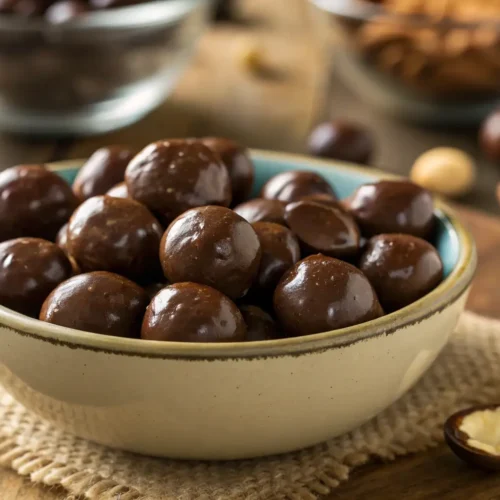
Homemade Chocolate Covered Peanuts
Equipment
- Mixing Bowl
- Microwave or Double Boiler
- Baking Sheet
- Parchment Paper
Ingredients
Main Ingredients
- 1 cup peanuts raw or roasted, unsalted preferred
- 4 oz dark chocolate (70% cocoa or higher) chopped or in chips
- 1 tsp coconut oil optional, for smoother melting
- ¼ tsp sea salt optional, for extra flavor
Instructions
- Prepare a baking sheet by lining it with parchment paper.
- If using raw peanuts, roast them at 350°F (175°C) for 8-10 minutes, then let them cool.
- Melt the dark chocolate in a microwave-safe bowl, heating in 30-second intervals and stirring between each. Alternatively, melt using a double boiler.
- Stir in the coconut oil (if using) until the chocolate is smooth and glossy.
- Add the peanuts to the melted chocolate and stir until fully coated.
- Using a fork or spoon, transfer small clusters of coated peanuts onto the prepared baking sheet.
- Sprinkle with sea salt (if using) and let set at room temperature for 30 minutes, or place in the refrigerator for 10-15 minutes to harden faster.
- Once set, store in an airtight container at room temperature for up to 2 weeks or refrigerate for up to 1 month.

